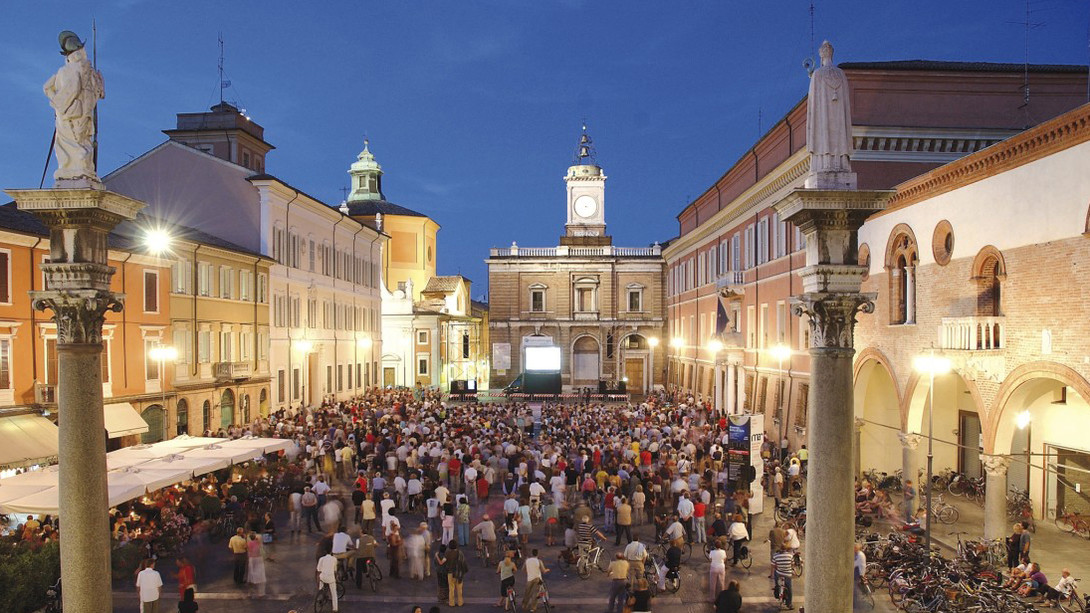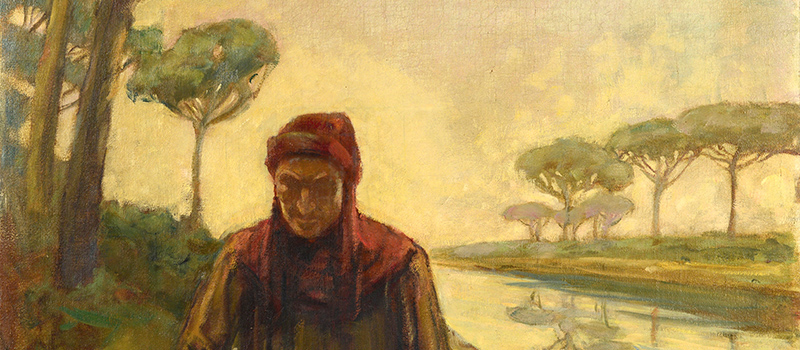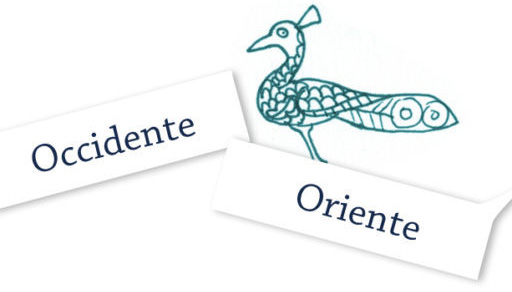Ravenna is the capital city of the Province of Ravenna, in the Emilia-Romagna region of Northern Italy. It was the capital city of the Western Roman Empire from 402 until that empire collapsed in 476. It then served as the capital of the Ostrogothic Kingdom until it was re-conquered in 540 by the Byzantine Empire. Afterwards, the city formed the centre of the Byzantine Exarchate of Ravenna until the invasion of the Lombards in 751, after which it became the seat of the Kingdom of the Lombards.
Although it is an inland city, Ravenna is connected to the Adriatic Sea by the Candiano Canal. It is known for its well-preserved late Roman and Byzantine architecture, with eight buildings comprising the UNESCO World Heritage Site “Early Christian Monuments of Ravenna“.

Ancient era
The origins of Ravenna are uncertain. The first settlement is variously attributed to (and then has seen the copresence of) the Thessalians, the Etruscans and the Umbrians. Afterwards its territory was settled also by the Senones, especially the southern countryside of the city (that wasn’t part of the lagoon), the Ager Decimanus. Ravenna consisted of houses built on piles on a series of small islands in a marshy lagoon – a situation similar to Venice several centuries later. The Romans ignored it during their conquest of the Po River Delta, but later accepted it into the Roman Republic as a federated town in 89 BC.
In 49 BC, it was where Julius Caesar gathered his forces before crossing the Rubicon. Later Octavian, after his battle against Mark Antony in 31 BC, founded the military harbor of Classis. This harbor, protected at first by its own walls, was an important station of the Roman Imperial Fleet. Nowadays the city is landlocked, but Ravenna remained an important seaport on the Adriatic until the early Middle Ages. During the Germanic campaigns, Thusnelda, widow of Arminius, and Marbod, King of the Marcomanni, were confined at Ravenna.
Ravenna greatly prospered under Roman rule. Emperor Trajan built a 70 km (43.50 mi) long aqueduct at the beginning of the 2nd century. During the Marcomannic Wars, Germanic settlers in Ravenna revolted and managed to seize possession of the city. For this reason, Marcus Aurelius decided not only against bringing more barbarians into Italy, but even banished those who had previously been brought there. In AD 402, Emperor Honorius transferred the capital of the Western Roman Empire from Milan to Ravenna. At that time it was home to 50,000 people. The transfer was made partly for defensive purposes: Ravenna was surrounded by swamps and marshes, and was perceived to be easily defensible (although in fact the city fell to opposing forces numerous times in its history); it is also likely that the move to Ravenna was due to the city’s port and good sea-borne connections to the Eastern Roman Empire. However, in 409, King Alaric I of the Visigoths simply bypassed Ravenna, and went on to sack Rome in 410 and to take Galla Placidia, daughter of Emperor Theodosius I, hostage.
After many vicissitudes, Galla Placidia returned to Ravenna with her son, Emperor Valentinian III, due to the support of her nephew Theodosius II. Ravenna enjoyed a period of peace, during which time the Christian religion was favoured by the imperial court, and the city gained some of its most famous monuments, including the Orthodox Baptistery, the misnamed Mausoleum of Galla Placidia (she was not actually buried there), and San Giovanni Evangelista.

Ostrogothic Kingdom
The late 5th century saw the dissolution of Roman authority in the west, and the last person to hold the title of emperor in the West was deposed in 476 by the general Odoacer. Odoacer ruled as King of Italy for 13 years, but in 489 the Eastern Emperor Zeno sent the Ostrogoth King Theodoric the Great to re-take the Italian peninsula. After losing the Battle of Verona, Odoacer retreated to Ravenna, where he withstood a siege of three years by Theodoric, until the taking of Rimini deprived Ravenna of supplies. Theodoric took Ravenna in 493, supposedly slew Odoacer with his own hands, and Ravenna became the capital of the Ostrogothic Kingdom of Italy. Theodoric, following his imperial predecessors, also built many splendid buildings in and around Ravenna, including his palace church Sant’Apollinare Nuovo, an Arian cathedral (now Santo Spirito) and Baptistery, and his own Mausoleum just outside the walls.
Both Odoacer and Theodoric and their followers were Arian Christians, but co-existed peacefully with the Latins, who were largely Catholic Orthodox. Ravenna’s Orthodox bishops carried out notable building projects, of which the sole surviving one is the Capella Arcivescovile. Theodoric allowed Roman citizens within his kingdom to be subject to Roman law and the Roman judicial system. The Goths, meanwhile, lived under their own laws and customs. In 519, when a mob had burned down the synagogues of Ravenna, Theodoric ordered the town to rebuild them at its own expense.
Theodoric died in 526 and was succeeded by his young grandson Athalaric under the authority of his daughter Amalasunta, but by 535 both were dead and Theodoric’s line was represented only by Amalasuntha’s daughter Matasuntha. Various Ostrogothic military leaders took the Kingdom of Italy, but none were as successful as Theodoric had been. Meanwhile, the orthodox Christian Byzantine Emperor Justinian I opposed both Ostrogoth rule and the Arian variety of Christianity. In 535 his general Belisarius invaded Italy and in 540 conquered Ravenna. After the conquest of Italy was completed in 554, Ravenna became the seat of Byzantine government in Italy.
From 540 to 600, Ravenna’s bishops embarked upon a notable building program of churches in Ravenna and in and around the port city of Classe. Surviving monuments include the Basilica of San Vitale and the Basilica of Sant’Apollinare in Classe, as well as the partially surviving San Michele in Africisco.

Exarchate of Ravenna
Following the conquests of Belisarius for Eastern Roman Emperor Justinian I in the 6th century, Ravenna became the seat of the Byzantine governor of Italy, the Exarch, and was known as the Exarchate of Ravenna. It was at this time that the Ravenna Cosmography was written.
Under Byzantine rule, the archbishop of the Archdiocese of Ravenna was temporarily granted autocephaly from the Roman Church by the emperor, in 666, but this was soon revoked. Nevertheless, the archbishop of Ravenna held the second place in Italy after the pope, and played an important role in many theological controversies during this period.
Middle Ages and Renaissance
The Lombards, under King Liutprand, occupied Ravenna in 712, but were forced to return it to the Byzantines. However, in 751 the Lombard king, Aistulf, succeeded in conquering Ravenna, thus ending Byzantine rule in northern Italy.
King Pepin of the Franks attacked the Lombards under orders of Pope Stephen II. Ravenna then gradually came under the direct authority of the Popes, although this was contested by the archbishops at various times. Pope Adrian I authorized Charlemagne to take away anything from Ravenna that he liked, and an unknown quantity of Roman columns, mosaics, statues, and other portable items were taken north to enrich his capital of Aachen.
In 1198 Ravenna led a league of Romagna cities against the Emperor, and the Pope was able to subdue it. After the war of 1218 the Traversari family was able to impose its rule in the city, which lasted until 1240. After a short period under an Imperial vicar, Ravenna was returned to the Papal States in 1248 and again to the Traversari until, in 1275, the Da Polenta established their long-lasting seigniory. One of the most illustrious residents of Ravenna at this time was the exiled poet Dante. The last of the Da Polenta, Ostasio III, was ousted by the Republic of Venice in February 1441, and the city was annexed to the Venetian territories in the Treaty of Cremona.
Ravenna was ruled by Venice until 1509, when the area was invaded in the course of the Italian Wars. In 1512, during the Holy League wars, Ravenna was sacked by the French following the Battle of Ravenna. Ravenna was also known during the Renaissance as the birthplace of the Monster of Ravenna.
After the Venetian withdrawal, Ravenna was again ruled by legates of the Pope as part of the Papal States. The city was damaged in a tremendous flood in May 1636. Over the next 300 years, a network of canals diverted nearby rivers and drained nearby swamps, thus reducing the possibility of flooding and creating a large belt of agricultural land around the city.

Modern age
Apart from another short occupation by Venice (1527–1529), Ravenna was part of the Papal States until 1796, when it was annexed to the French puppet state of the Cisalpine Republic, (Italian Republic from 1802, and Kingdom of Italy from 1805). It was returned to the Papal States in 1814. Occupied by Piedmontese troops in 1859, Ravenna and the surrounding Romagna area became part of the new unified Kingdom of Italy in 1861.
During World War II, troops of 4th Princess Louise Dragoon Guards – 5th Canadian Armoured Division and the British 27th Lancers entered and occupied Ravenna on 5 December 1944. A total of 937 Commonwealth soldiers who died in the winter of 1944-45 are buried in Ravenna War Cemetery, including 438 Canadians. The town suffered very little damage.
